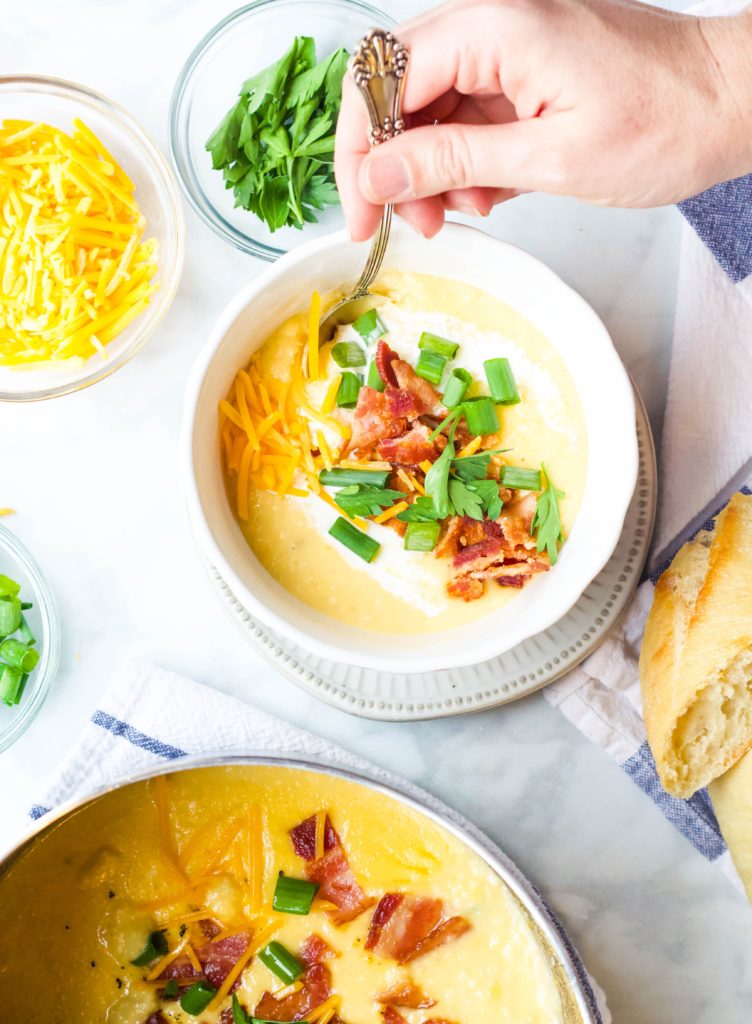All fields are required
Posted in Food Safety on October 15, 2019

With the recent popularity of the show This is Us on the NBC Network many people were scared enough to totally throw their Crock Pot in the trash and never look back. While yes that was a freak accident and it is obviously a television show so I kept on cooking. And here’s my take on Crock Pot Food Safety.
Whether you call it a crock pot or a slow cooker (I will use the term crock pot in the post because while yes it is a brand, it is also what I am most familiar with) there are always food safety tips to follow when cooking up your favorite meals. This is the opposite of our friend the Instant Pot. There are also myths that have been passed on from our parents and even grandparents that we want to make sure are debunked.
There are so many resources on the internet for cooking in a crock pot but we stuck to credible ones such as the University of Minnesota Extension.
Is a slow cooker a safe way to cook food?
Yes, if you use them correctly. The slow cooker cooks foods slowly at a low temperature, generally between 170 and 280 degrees F, over several hours. The combination of direct heat from the pot, lengthy cooking and steam, destroys bacteria making the slow cooker a safe process for cooking foods.
How much liquid do I add?
Water or liquid is necessary to create steam. When cooking meat or poultry, the water or liquid level should cover the ingredients to ensure effective heat transfer throughout the crock. Some manufacturers of slow cookers recommend adding liquid to fill the stoneware 1/2 to 3/4 full. Follow the manufacturer’s recipes and directions for best results.
Slow cooker food safety reminders
Don’t put frozen or partially thawed meat or poultry into a slow cooker—they take longer to get to 165 F, and can also cool everything in the slow cooker. That’s like building a bacteria playground. One of the biggest myths surrounding cooking in any type of slow cooker is that frozen foods can be added and just add more heat or longer time cooking. A huge no-no.
Veggies cook slower than meat or poultry, so put them in the cooker first, on the bottom. Then add meat or poultry, then cover with water, stock or broth. Keep the lid firmly in place, removing it only to check for doneness or stir. Moist foods like soup, chili, pasta sauce or stews are ideal for slow cookers because the steam that builds up makes for a very inhospitable environment for bacteria.
MYTH: SLOW COOKERS ARE GOOD FOR COOKING EVERYTHING
Sadly, this is a myth. There are some things that just aren’t going to turn out well in the slow cooker, no matter how hard you try. I’ve tried to make one-pot dishes using regular long-grain rice, and I’ve found that only instant rice cooks consistently in the slow cooker. Bacon, or anything else that needs to be crispy, will not turn out well in the slow cooker. Some seafood, like shrimp, will work, but only if you add it during the last few minutes of cook time. Because fish and shellfish cook so quickly, you can’t make a seafood stew in a slow cooker. Sorry.
MYTH: YOU CAN DUMP ALL YOUR INGREDIENTS IN THE SLOW COOKER, SET IT AND GO
I wish this were true — and it is for some recipes — but for many, it isn’t. If you want to achieve truly delicious meals in your slow cooker, it does take a little more finesse. You may have to brown some ingredients beforehand (like cubes of beef if you’re making a stew), though if your slow cooker has a brown function you can do this right in the appliance. Or, you may have to add more delicate ingredients 30 or 15 minutes before the cook time is up in order to ensure that things like greens or rice don’t overcook. So it’s not quite as simple as it seems. It may take a little extra work, but the end results — more flavorful meals — are definitely worth it.
MYTH: YOU CAN LEAVE YOUR SLOW COOKER ON ALL DAY
Don’t get me wrong, you can absolutely leave your slow cooker on all day — as long as it has a timer that automatically switches to warming mode when the cook time is done. This might seem like a no-brainer, but if you’re a slow cooker newbie and are investing in a new model, it’s absolutely crucial to make sure your appliance has that built-in timer; some of the cheaper or older slow cookers don’t have this functionality. Many recipes don’t need to cook for a full seven or eight hours, so if you set it in the morning and head off to work, your food will be done before you make it back home. So double-check that the model you’re buying can shut off automatically; otherwise, what’s the point?
No matter what you are cooking we hope that your recipe turns out delicious and that you enjoy the ability to cook while multi-tasking around the house.
By: Samantha Cooper, Contributing Writer (Non-Lawyer)